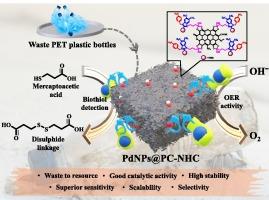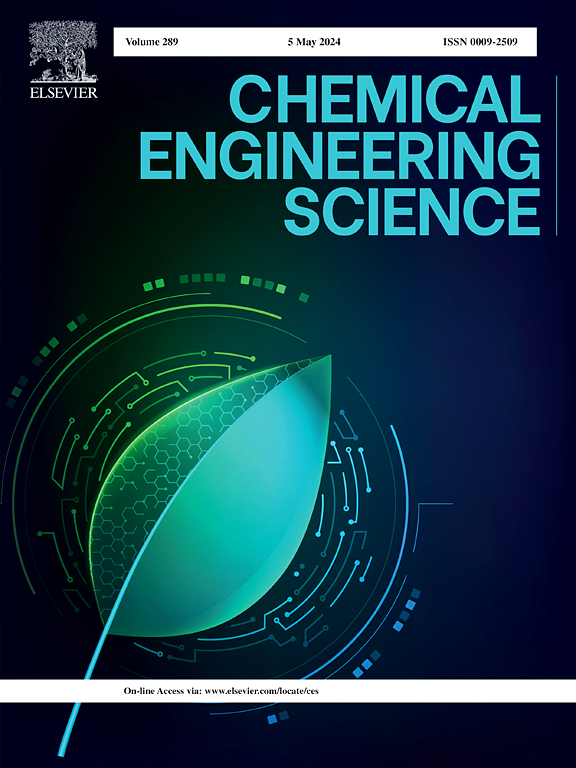A sustainable anchoring of palladium nanoparticles on waste plastic derived functionalized robust carbon: There of application in sensing of genotoxic bio-thiol compound and oxygen evolution activity
IF 4.1
2区 工程技术
Q2 ENGINEERING, CHEMICAL
引用次数: 0
Abstract
Polyethylene terephthalate (PET) based plastic pollution is most grievous threat for environment and lives on earth. However, reusing such plastic waste as carbon (PC) resource for material development become fascinated research in concern of waste management. In this context, we report fabrication of a new N-heterocyclic carbene-palladium nanoparticles supported on PC (PdNPs@PC-NHC) as a promising nanocatalyst and carried out numerous analytical techniques to the aforementioned material. Insight studies on nanocatalyst for enzymatic oxidation of o-phenylenediamine (OPD) in the presence of hydrogen peroxide (H2O2) shows effectual values of maximum velocity (Vmax) and Michaelis-Menten constant (Km) for H2O2 i.e., 3.3 × 10-8 Ms−1 and 4.4 mM, while OPD yielded 0.5 × 10-9 Ms−1, 0.29 mM respectively, demonstrating the significant potential as a nanozyme with perceptible seven recycles. Herein, the nanozyme proclaims the excellent sensitivity of 0.042 µmol−1 cm−1 in the detection of the sulfhydryl-containing mercaptoacetic acid (MAA) with a detection limit of 3.17 µM. Further magnitude, the same material employed as electrocatalyst for oxygen evolution reaction (OER). This exhibited remarkable OER activity with 46 mV/dec of shallow Tafel slope and 310 mV of overpotential to reach up to 40 mA/cm2. The LSV polarisation curve following the long-term 24 h chronoamperometric stability test, which confirmed resilient nature of the PdNPs@PC-NHC nanocatalyst.


求助全文
约1分钟内获得全文
求助全文
来源期刊

Chemical Engineering Science
工程技术-工程:化工
CiteScore
7.50
自引率
8.50%
发文量
1025
审稿时长
50 days
期刊介绍:
Chemical engineering enables the transformation of natural resources and energy into useful products for society. It draws on and applies natural sciences, mathematics and economics, and has developed fundamental engineering science that underpins the discipline.
Chemical Engineering Science (CES) has been publishing papers on the fundamentals of chemical engineering since 1951. CES is the platform where the most significant advances in the discipline have ever since been published. Chemical Engineering Science has accompanied and sustained chemical engineering through its development into the vibrant and broad scientific discipline it is today.
 求助内容:
求助内容: 应助结果提醒方式:
应助结果提醒方式:


